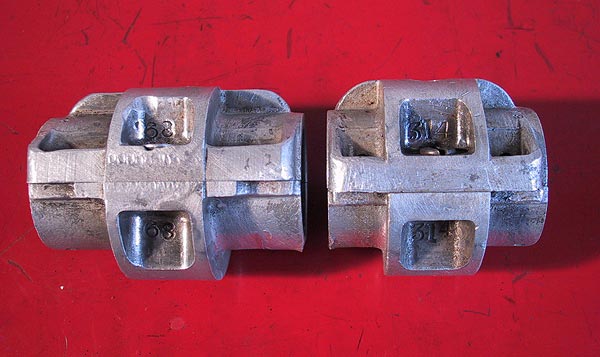 |
Two bearing sets. Note that #4, on the left, is significantly longer than the other bearings. Each bearing half is stamped with the same number. It would seem that these were machined in batches, numbered consecutively and then used at random. These two sets are numbered 68 and 314. |
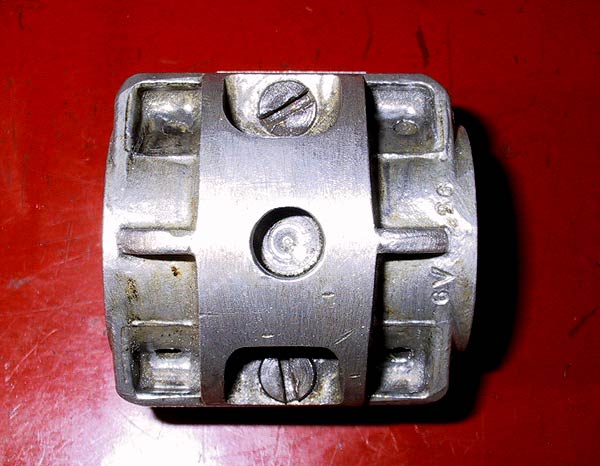 |
Bearing number 6 shown from the top. The two machine screws keep the bearing bottom half aligned with the upper part. The centre-hole is the locating socket for the dowel. Stamped on the forward end is its position identifier - 6V26 (refer to the crank bearing web). Note that the 4 corners each form a well through which there is a 1/8" hole. The cam shaft is lubricated by oil splashing onto the top of the bearings and then bleeding through the feed holes. |
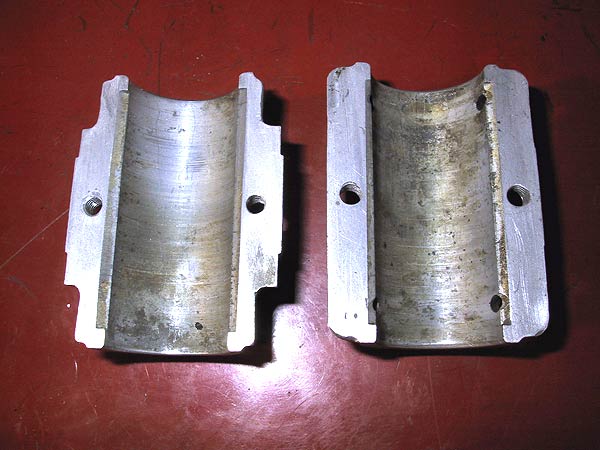 |
There was minimal wear on the cam journals or on any of the bearings except for number 4. Closer inspection showed that the two halves did not mate correctly, there being a visible gap. This situation had evidently existed at least since the last rebuild. The mating faces were gently stoned down until the edges met. The diametric over-tolerance was corrected from roughly 0.004" down to 0.0005" by removing the distortion. Note the chamfer on the inner edges, which will hold oil and ensure good lubrication. The slight discoloration is oil varnish embedded in the bearing surface. |
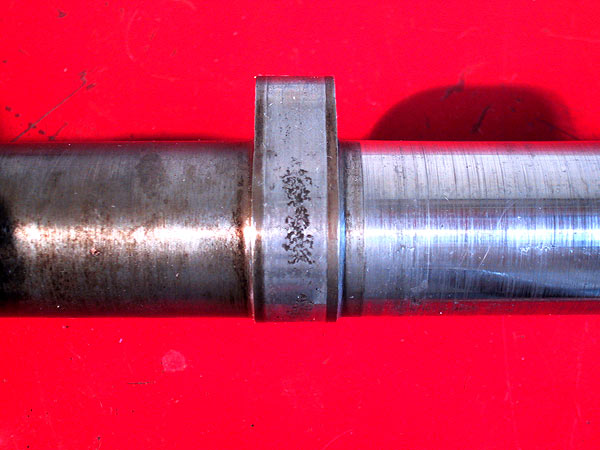 |
This car spent several decades as a wreck. Corrosion effects on the side of the lobe are visible but are completely smooth. The journal, to the right of the lobe, shows feint signs of scouring but is still smooth and within original tolerance. |
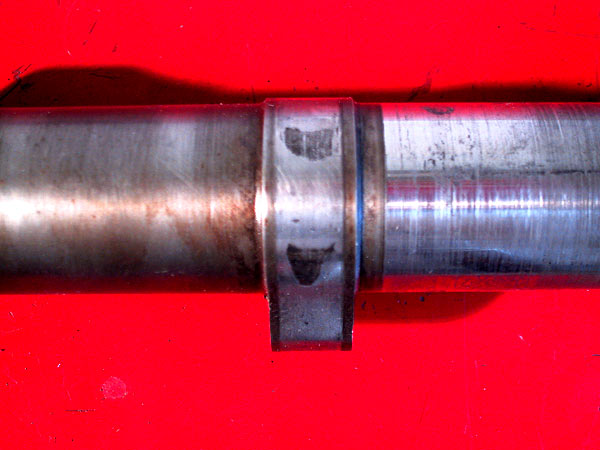 |
About half of the lobes show similar markings where the case hardening was removed when the lobes were profiled. There is no lipping at the edge of the track where the tappet roller sits (shown as the brown lines at the lobe edge). |
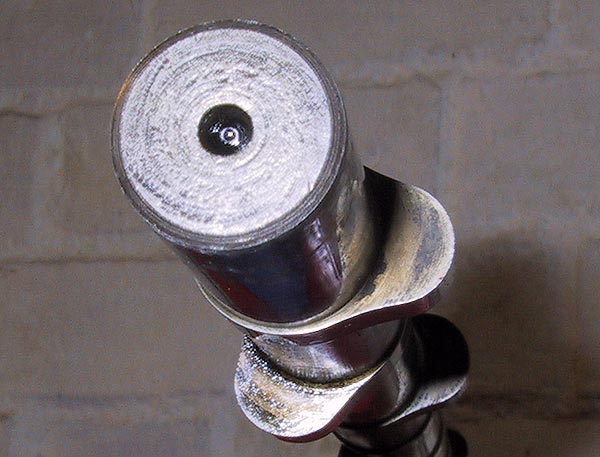 |
A view from the back of the camshaft showing the pear-shaped profile of the lobes. |